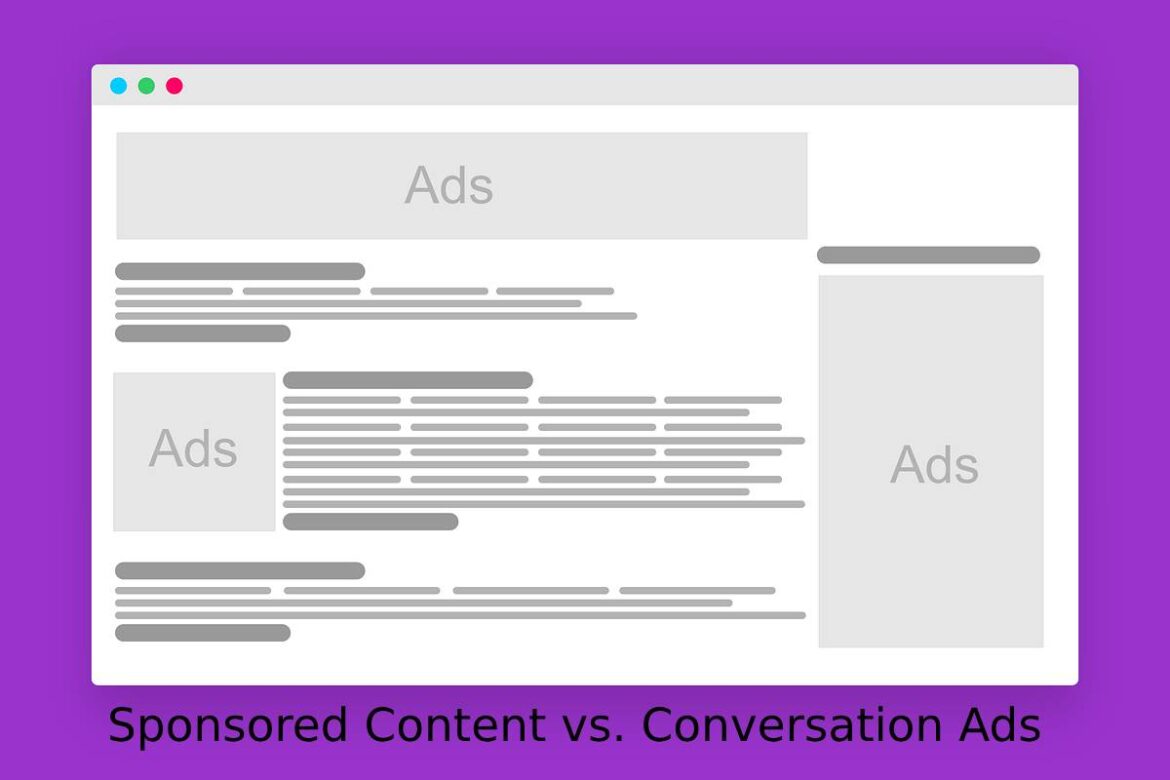LinkedIn offers a variety of ad formats for B2B marketers, but two in particular—Sponsored Content and Conversation Ads—are often at the center of campaign planning debates. Both have their place, both can perform well, but they serve very different functions depending on your objective, audience, and stage in the funnel.
If you’re deciding between the two, this guide can help you weigh the trade-offs and choose the right format for your next campaign.
Table of Contents
Start With Your Goal
Before looking at formats, ask yourself what success looks like. Are you trying to boost awareness? Drive event sign-ups? Generate demo requests? Your answer should shape everything that follows.
- If your goal is brand visibility, engagement, or thought leadership, Sponsored Content is typically the better choice.
- If your goal is direct response, lead capture, or event promotion with a personal touch, Conversation Ads are likely more effective.
That said, the most successful campaigns often layer both over time—but knowing when to start with one over the other is key.
Choose Sponsored Content If…
You’re nurturing a cold or broad audience.
Sponsored Content appears directly in a user’s feed and behaves like a regular post. This makes it less intrusive and more native—ideal for prospects who haven’t heard of you yet or need to build familiarity over time.
Your content speaks for itself.
Have a great whitepaper, report, or explainer video? Sponsored Content is perfect for distributing these assets widely. It gives you space to tell a story with a headline, visual, and post text—all within the user’s natural browsing experience.
You want more creative control.
With Sponsored Content, you can test different formats—single image, video, carousel—and tailor the message more freely. It’s often easier to repurpose existing organic content into these ads.
You plan to retarget later.
Think of Sponsored Content as the start of a longer journey. It builds engagement and paves the way for retargeting with stronger calls to action later.
Choose Conversation Ads If…
You’re targeting a known, specific audience.
Conversation Ads work well when you’re speaking to a defined list—like decision-makers at target accounts—because the format mimics a personal message in their inbox. It feels more intentional and, when done right, less like advertising.
You’re offering a clear next step.
Whether it’s scheduling a call, downloading a gated asset, or registering for an event, Conversation Ads are all about offering choices in a single interaction. The user picks the CTA that fits their interest.
You want to guide the journey.
This format lets you script a branching path of responses—essentially building a mini funnel inside the ad itself. It’s like an interactive FAQ and pitch in one, which can be particularly effective for mid-to-bottom funnel prospects.
You’re working with an ad agency that’s experienced in conversational design, since writing for this format is less about clever copy and more about structuring the experience like a helpful, guided conversation.
But What About Cost and Performance?
Both formats can be effective—but performance often comes down to context, not cost.
Sponsored Content tends to have a broader reach and lower cost-per-impression, especially for top-of-funnel goals. It’s easier to test, iterate, and scale. But engagement is often more passive.
Conversation Ads, while usually more expensive per click or lead, often drive higher intent actions. The user has to engage with the message directly to participate, which acts as a built-in filter for more serious prospects.
If you’re working with an ad agency that can monitor performance across multiple audience segments, they may recommend using Sponsored Content early in the campaign to build awareness, followed by Conversation Ads for warmer segments who’ve already shown interest.
Final Thoughts
Choosing the right LinkedIn ad format isn’t about which one is objectively better—it’s about which one is better for what you need right now. Sponsored Content works best for education and brand building. Conversation Ads are ideal for action and interaction.
The smartest marketers know how to use both formats in tandem, switching between them as leads move through the funnel. By mapping your goals to the user’s intent and choosing the format that matches, you’ll get more value from your spend—and give your audience a better experience at every step.

